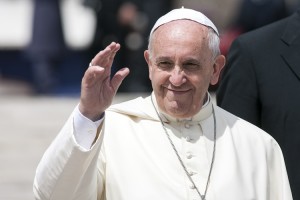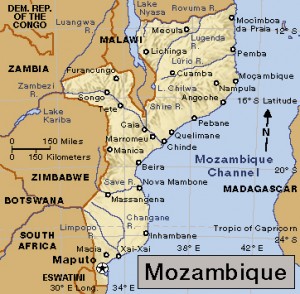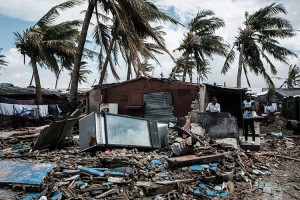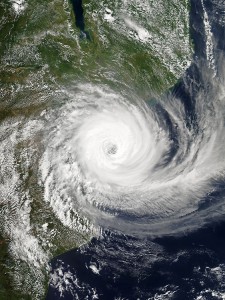Pope Francis and the “Three M’s”
Monday, September 9th, 2019September 9, 2019
Tomorrow, September 10, Pope Francis returns to Rome after a six-day apostolic trip to the east African nation of Mozambique and the nearby island nations of Madagascar and Mauritius—the “Three M’s” of the Indian Ocean. Apostolic is another word for papal or having to do with the pope. Throughout the trip, enthusiastic crowds turned out to welcome the pope, who travelled to the three nations as “a pilgrim of peace, hope, and reconciliation.” Francis has been leader of the Roman Catholic Church since 2013.

Pope Francis is concluding a trip to Mozambique, Madagascar, and Mauritius. Credit: © Giulio Napolitano, Shutterstock
On September 4, Francis arrived in Maputo, the capital of Mozambique, where about 40 percent of the people are Catholic. (Madagascar and Mauritius have Catholic populations of roughly 30 percent.) On September 5, the pope visited Mozambique President Filipe Nyusi at the Palácio da Ponta Vermelha (Palace of the Red Point), the president’s official residence. Francis then met with civil and religious authorities and members of the diplomatic corps. He hosted an interreligious prayer meeting with young people before paying a private visit to the “Matthew 25″ House, which helps homeless and impoverished children. On September 6, Francis visited Zimpeto Hospital and celebrated Mass before some 60,000 people at Zimpeto Stadium. (Zimpeto is an area of Maputo.) He then departed for Antananarivo, the capital of Madagascar.

Click to view larger image
Maputo is at the southern tip of Mozambique. Madagascar lies across the Mozambique Channel. Credit: WORLD BOOK map
On September 7, Francis visited President Andry Rajoelina at the Iavoloha Palace just outside Antananarivo. Formal meetings then preceded a prayer service at the Monastery of the Discalced Carmelites and a visit to the tomb of the Blessed Victoire Rasoamanarivo (1848-1894), a Malagasy woman who dedicated her life to helping the poor of Madagascar. Pope John Paul II beatified Rasoamanarivo (declared her among the blessed in heaven) in 1989. On Sept. 8, 2019, Pope Francis celebrated Mass before visiting the Akamasoa City of Friendship foundation for the poor. He led a prayer for workers and met with religious officials before leaving for Port Louis, the capital of Mauritius, on September 9.
Francis began his day (today) in Mauritius with a Mass at the Monument of Mary Queen of Peace in Port Louis. The pope then visited the shrine of the French Catholic priest and missionary Père Jacques-Désiré Laval (1803-1864). Laval (also beatified by John Paul II) dedicated his life to helping the poor and sick of Mauritius, and his shrine is said to have miraculous qualities. The day of Laval’s death, September 9—the day of the pope’s visit—is a special day of celebration and reverence for Catholics of the region. Francis then met with Prime Minister Pravind Jugnauth and acting President Barlen Vyapoory before returning by plane to Antananarivo. Tomorrow, September 10, a final ceremony at Ivato International Airport precedes his scheduled return flight to the Vatican in Rome.
Francis is from Argentina. He is the first pope from Latin America and the first Jesuit pope. Jesuits are members of a religious order called the Society of Jesus. Francis is known for his commitment to social justice, especially for the poor; his humble lifestyle; and his conservative religious beliefs. Francis visited Panama for World Youth Day in January 2019, and in February he became the first pope to visit the United Arab Emirates. Francis travelled to Morocco in March and to the Balkan states of Bulgaria, North Macedonia, and Romania in May and June.





